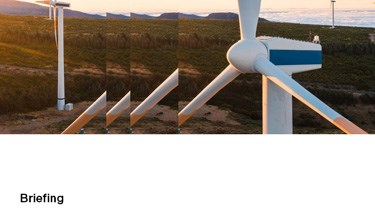The clean team approach in M&A & PE
Following on from our article on the principles and content of non-disclosure agreements (NDAs) from 05.01.2024, this article deals with the special features of what is known as the “clean team approach”. Clean teams are set up in transaction processes as an additional way of protecting highly confidential information.
In addition to an NDA, a clean team approach may be required as a further safeguard due to limitations existing under competition and data protection law. From the seller’s and target company’s perspective, such an approach is also sometimes desirable in order to provide the best possible protection for highly confidential company data in transaction processes.
1. General
In the case of highly confidential information, further safeguards may be appropriate or needed so that the disclosing management and the shareholders can weigh up the interests when deciding to disclose such information to a buyer.
If the buyer is a current or potential competitor of the target, a clean team approach may be the method of choice. Information that allows conclusions to be drawn about the specific market behaviour of the target and/or the seller (competitively sensitive information) must be treated with the utmost confidentiality among competitors. The idea behind setting up a clean team is to ensure that competitively sensitive information will only be exchanged within a restricted group of people. Where necessary, this group will pass on aggregated information to decision-makers outside the clean team only, but will otherwise be obliged to maintain confidentiality.
Normally, a clean team will consist of external third parties and a limited group of the buyer’s employees who do not perform operational tasks. Using clean teams consisting solely of external third parties, often referred to as “black boxes”, is especially advantageous for smaller companies.
Overall, the clean team approach serves as an additional safeguard to ensure that the due diligence process preceding a transaction is not misused for the unlawful exchange of competitively sensitive information between competitors under section 1 of the German Act against Restraints of Competition (Gesetz gegen Wettbewerbsbeschränkungen, GWB) or Article 101 of the Treaty on the Functioning of the European Union, TFEU. Such a violation of section 1 of the Act against Restraints of Competition or Article 101 of the TFEU can lead to the imposition of administrative fines pursuant to section 81(1) and (2) of the above-mentioned Act and Article 23 of the Regulation on the implementation of the rules on competition law (Regulation (EU) 1/2003). Fines of up to 10% of the company concerned’s total turnover from the previous financial year can be imposed. Additionally, there is the risk of damages claims from the parties injured by the cartel.
The more likely it is that a transaction will be concluded (i.e. completed), the less important any safeguards to prevent the unlawful exchange of information under competition law tend to be.
2. Key terms of a Clean Team Agreement (CTA)
Standards have also been developed for the terms of clean team agreements, in particular to ensure compliance with competition law requirements during the exchange of information. Sellers and buyers often have distinct interests in this respect as well, but they share the common goal of needing to meet minimum standards under competition law.
CTAs typically include the following elements:
- Parties, transaction, process phase and reference to the NDA: The parties and the transaction definitions generally align with those of the NDA (see our previous article on this), which should be referenced in the CTA. The status of the negotiations (e.g. reaching a certain later stage in the bidding process) can also be included for clarity.
Under competition law, the disclosure of information is often seen as less problematic in practice if there are increasing signs that a contract will be signed and the number of bidders has been significantly reduced. This will often be the case when a CTA is concluded with selected interested parties at a late stage in the process. Nevertheless, even at this stage, the conclusion of a CTA should not be waived. The reason for this is that, especially when it comes to exchanging competitively sensitive information, the parties to the merger continue to be considered independent companies and competitors until closing. Therefore, no information should be exchanged with persons outside the clean team, not even shortly before signing (and until closing) of the transaction.
- Seller’s advisors: While often not yet included in NDAs, advisors to the seller are sometimes named in CTAs (for example, the M&A advisor or the seller’s legal counsel) as they often oversee the process of handling information (“control function”) as part of the clean team approach. They act as a kind of filter before the information is passed on to the buyer (see below).
- Definition of highly confidential information: A key reason for concluding a CTA is to separately define and protect highly confidential information. This is a level above the “ordinary” confidential information covered under an NDA, which also applies concurrently. Highly confidential information, i.e. competitively sensitive information in particular, must be managed separately (e.g. in a separate clean virtual data room (Clean VDR)/Red Data Room). It should be made clear that the seller can also designate other information as clean team information/highly confidential information at any time during a disclosure (e.g. via e-mail), and thus that the provisions of the CTA apply. The standard exceptions for confidential information mentioned in the previous article on the NDA generally also apply here.
- Clean team members: From the seller’s perspective, it is crucial to know exactly who is part of the clean team on the buyer’s side and to have the freedom to decide whether to allow certain individuals to continue as clean team members.
- For this purpose, an annex containing a list of specific names of individuals (not just companies) who are initially authorised as clean team members can be helpful. In addition, a Declaration of Acknowledgement and Accession should be attached to the CTA as an annex, which initial and subsequent clean team members who have been explicitly approved by the seller can use to accede to the CTA.
- From a competition law perspective, particular caution is required if employees of the buyer are to become part of the clean team. It is important to ensure that these individuals are not active in the operational business, especially not in a business area in which the buyer and the target are already in competition. This typically relates to areas such as sales, purchasing, research and development and production.
- Only employees in administrative and general functions (such as in the areas of finance, controlling, M&A, legal and tax) should be included. Nevertheless, in certain cases, it may be appropriate to impose a lock-up period of around one year during which the employees concerned may not be involved in the buyer’s operational business. The closer an affected employee is to the operational business, the more important these additional safeguards become.
- Buyers often try to minimise the restrictions and include operational employees in the clean team. However, it is also in the buyer’s interest to comply with competition law limitations, as the competition law risks apply especially to the buyer. This is because the due diligence process provides a buyer with extensive insights into the target’s business. Competition authorities assume that once competitively sensitive information is exchanged, a rational company would use it to strategically adjust its behaviour. This could lead to concerted practices among competitors and ultimately to violations of both the German and European prohibitions of cartels under section 1 of the Act against Restraints of Competition and Article 101 of the TFEU. To avoid a competition law violation, it is also in the interests of the buyer to refrain from using operational business employees as clean team members. Each specific case must be analysed in consultation with competition law experts.
- Disclosure of highly confidential information only in aggregated form: When it comes to the disclosure of highly confidential information, the key distinction from an NDA is that such disclosure is restricted to a select group of clean team members and may not be disseminated beyond this group.
- As opposed to, for example, “standard” due diligence, it is not permissible to share information and due diligence reports with the broader group of individuals covered by the NDA without limitations. Nevertheless, it may be necessary in a specific transaction for deal team members to be informed on a need-to-know basis, at least in aggregated form, about certain insights gleaned from the highly confidential information by the clean team.
- In such situations, it is common practice to provide that the buyer may receive aggregated and anonymised reports on specific subjects reviewed by the clean team. It is necessary to ensure that these reports do not contain any competitively sensitive or other highly confidential information, such as information about customers, suppliers, prices, margins, turnover, sales figures and trade secrets, etc.
- As mentioned above, the M&A advisor or, as a rule, even more appropriately, the seller’s lawyer can exercise a neutral control function. For this purpose, it is necessary that the draft of the aggregated report first be forwarded to the seller and approved by it before being passed on to the buyer. From the seller’s perspective, it should be ensured that the person exercising the control function has the discretion to request further anonymisation or redaction before the aggregated report is disclosed to the buyer.
- Reference to or repetition of individual provisions of the NDA: The following points are in line with our comments on NDAs in our article dated 05.01.2024:
- provisions governing confidentiality;
- disclosure prohibition with narrow exceptions in the case of statutory disclosure obligations;
- voluntary disclosure by the seller;
- return or destruction of information;
- term of the agreement;
- protection for third parties; and
- substantive law, forum for disputes and other general provisions.
In this context, the CTA can also reference the concurrently applicable NDA. However, it is often advisable to expressly repeat these provisions in the CTA for reasons of clarity. In some cases, considering the highly confidential nature of the information, it may also be advisable to tighten certain provisions (for example, extending the duration in the CTA compared to the NDA).
3. Concluding comments
In transactions where competitively sensitive information is expected to be exchanged as part of the transaction, either due to the business model or the parties concerned, it is advisable to prepare a clean team approach early on (for instance, by setting up a separate clean team data room in advance).
Sometimes, however, it only becomes apparent during the process that a clean team approach is necessary. It will then be advisable in the individual case to decide in close consultation with competition law experts whether a comprehensive clean team approach with a separate CTA is appropriate.
In addition to using a clean team (possibly in the form of a “black box”), it may also be possible in individual cases to disclose relevant documents only in a redacted or aggregated form.
Well
informed
Subscribe to our newsletter now to stay up to date on the latest developments.
Subscribe now







